When bacteria fight for their lives, they activate their most efficient killing machines.
One of these killer weapons is the so-called type 6 secretion system.
Bacteria use this nanoweapon like a crossbow to shoot toxic arrows into their foes.
And these arrows consist of extremely sharp tips, long spikes and lethal toxins.
So, when a bacterium shoots such an arrow into another bacterium, it also shoots these toxins.
However, it is still not well understood how bacteria glue these toxins to the type 6 secretion system spike.
And how do bacteria protect themselves from the lethal activity of the toxin?
A new study tried to answer exactly these questions.

The known toxins of the type 6 secretion system nanoweapon
This study focused on the pathogen Escherichia coli. This bacterium defends itself with a crossbow and a special arrow. The spike of that arrow carries a so-called lipase toxin. This toxin dissolves the membrane of its prey to kill it.
But the researchers were curious about how this lipase toxin sticks to its spike. So, the researchers looked at the spike of the arrow and found that it has a little extension. And this extension seems to work like a patch to stick to the toxin.
Other bacteria have similar patches on their type 6 secretion system spikes. And in these bacteria, the patches are necessary for the toxin to stick to the spike.
The new study found that the toxin remains inactive when it sticks to the spike protein. Nicolas Flaugnatti, the author of the study, says, that: “This data was, in my opinion, one of the most exciting of this story”. It seems that the bacterium produces the spike protein and the toxin together. But at the same time, the bacterium protects itself from the toxin’s activity.
So, after the bacterium fired the spike into the prey bacterium, the toxin needs to fall off the spike to be active. For this, Nicolas considers this scenario: maybe the spike-toxin complex hijacks a protein from the prey. This could break apart the toxin-spike complex and activate the toxin.
What does the type 6 secretion system spike look like?
Next, the researchers wanted to understand how the spike inhibits the activity of the toxin. For this, they needed to know what the type 6 secretion system spike with the toxin looks like. To see the spike, they used a special form of microscopy.
And they found that the spike complex kind of looked like a jester hat. This could mean that the spike binds three toxins and delivers all three in one firing event.
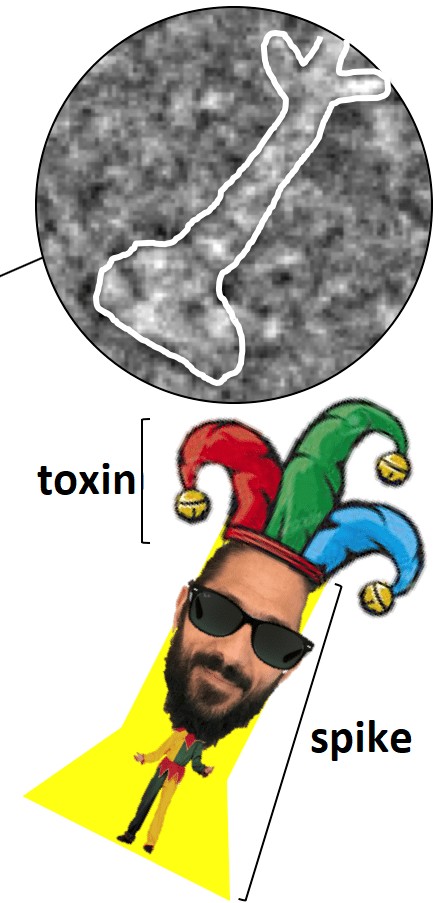
This was very exciting for everyone involved in this study. Yet, it did not explain the toxin inhibition. So, Nicolas and his colleagues asked other labs with better microscopy techniques for help. Together, they visualised the smallest details of the spike, so that now they have a high-resolution structure of it.
A structure, which the whole field was waiting for.
While the structure for the spike was already known from other bacteria, it was the first time that someone “saw” the toxin. They found that the toxin has an elongated structure and that three toxins bind around one spike.
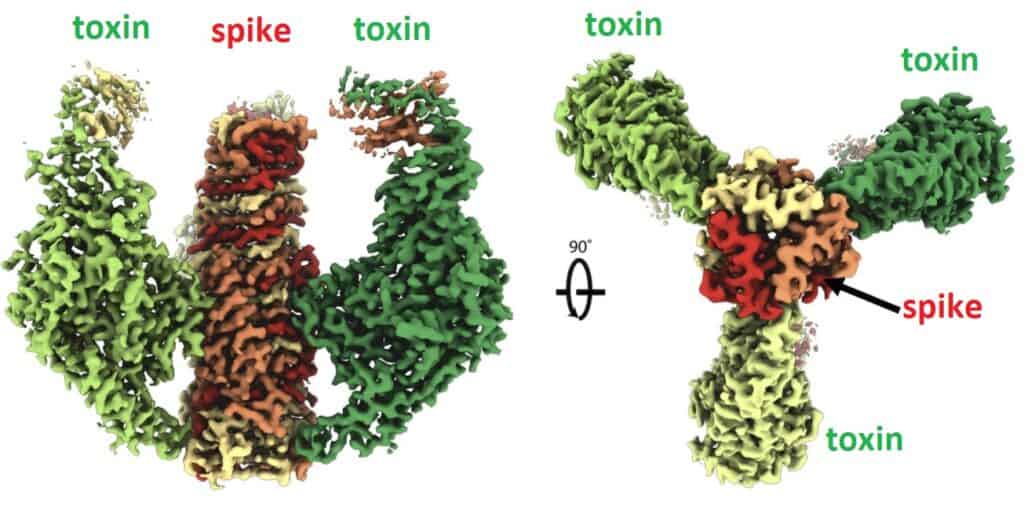
From this, the researchers understand how exactly this toxin binds to the type 6 secretion system spike.
Great stuff.
And they saw that the spike seems to shield the toxin. Like this, it cannot bind to the membrane and break it apart.
So, this is how the bacterium protects itself from the toxin. Otherwise, the toxin would dissolve the bacterium’s own membrane.
Why do we need to know the structure of the type 6 secretion system spike?
Researchers already consider the type 6 secretion system nanoweapon a promising tool to transport proteins. However, to actually use this delivery device, we need to understand exactly how the toxin sticks to the spike.
Other studies already tried to glue other toxins to the type 6 secretion system spike. However, so far, they only knew of one of these interaction patches. It seems that having just one of these patches is not enough for a toxin to stick to its spike.
Now, that we know more details about these patches, it would be possible to engineer proteins with the right patches to stick to the spike. One possible application would be to produce probiotic bacteria that fire arrows with particular toxins to kill pathogens.
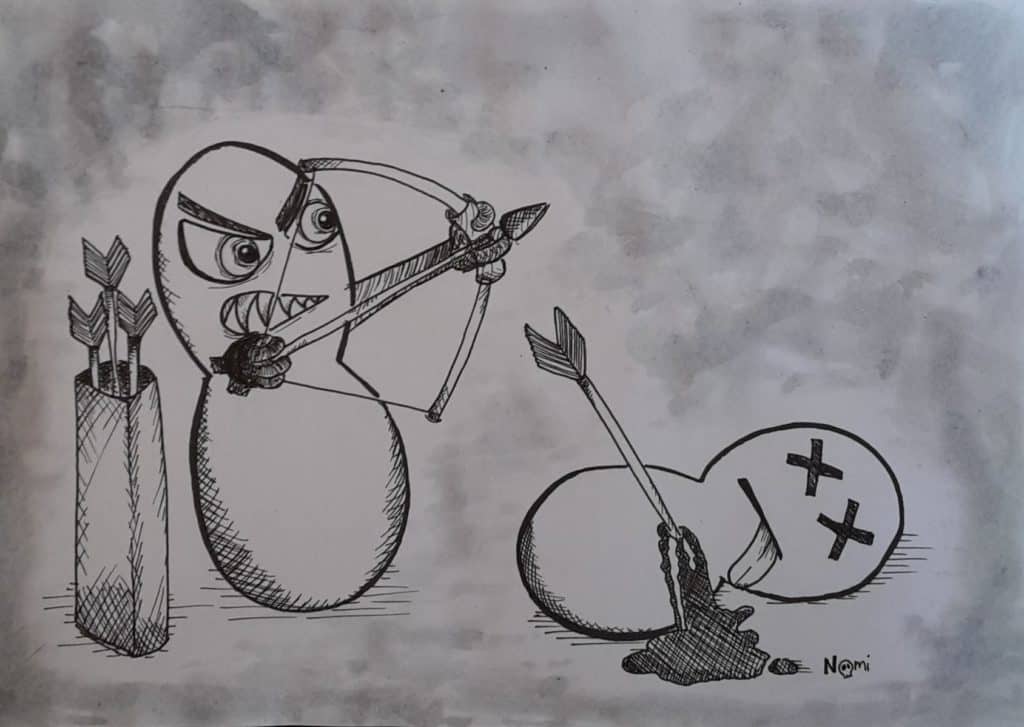
Another idea would be to block the patches between spike and toxin. For this, it is necessary to know the structure of the type 6 secretion system spike to design specific inhibitors. Then, the bacterium would shoot blank bullets instead of toxic arrows.
Inactivating this weapon could even prevent the colonization of undesirable bacteria.
Great science makes for a great story
Researchers learn more and more about this fascinating killer machine. While my own time studying this nanoweapon is over, I still love to follow all the news around it.
Now that we know the structure of a toxin-loaded spike, so many questions are answered.
Problems that I could not solve, finally make sense.
I found inner peace.






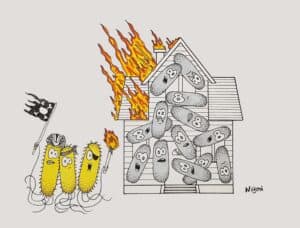
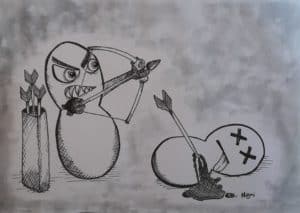



2 Responses
Great work
So attractive subject
Thank you
Thank you for your feedback :)